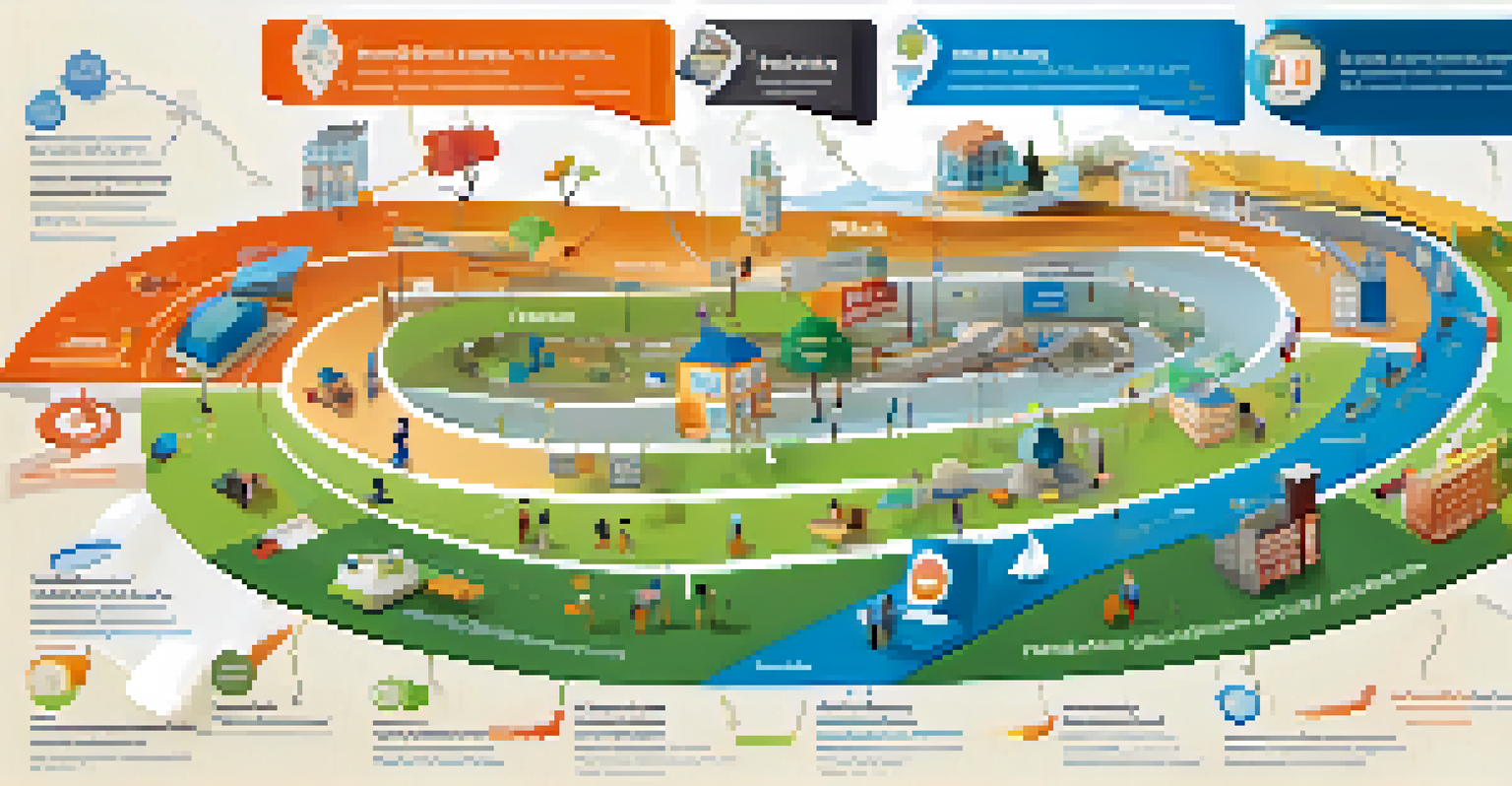Utilizing Research to Inform Learning Pathway Design

Understanding Learning Pathways and Their Importance
Learning pathways are structured plans that guide learners through educational experiences. They provide a clear route, helping individuals acquire knowledge and skills systematically. By outlining specific goals and checkpoints, these pathways make learning more efficient and tailored to individual needs.
The future belongs to those who learn more skills and combine them in creative ways.
In a world where information is abundant, having a well-defined learning pathway can be the compass that directs learners towards their goals. This is especially vital in diverse educational settings, where students come with varying backgrounds and learning styles. A thoughtfully designed pathway can bridge gaps and foster inclusive learning.
Ultimately, effective learning pathways not only enhance knowledge retention but also boost learner confidence. When learners see their progress mapped out, they feel more motivated and engaged, paving the way for a more enriched educational journey.
The Role of Research in Learning Pathway Design
Research plays a pivotal role in shaping effective learning pathways. By analyzing data on learner behaviors, preferences, and outcomes, educators can craft pathways that truly resonate with their audience. This evidence-based approach ensures that the design is not just intuitive but also proven to work.

Furthermore, research helps identify gaps in existing pathways and highlights areas for improvement. By continuously studying learner feedback and engagement levels, designers can adapt their approaches to meet the evolving needs of students. This iterative process is crucial for maintaining relevance in a rapidly changing educational landscape.
Learning Pathways Enhance Education
Structured learning pathways guide learners, making education more efficient and tailored to their needs.
Incorporating research into learning pathway design is akin to using a map when venturing into unfamiliar territory. It provides direction and insights, helping educators navigate challenges and make informed decisions that enhance the overall learning experience.
Identifying Key Research Sources for Learning Pathways
To effectively design learning pathways, it's essential to identify credible research sources. Academic journals, educational institutions, and government reports can provide valuable insights into effective teaching practices and learner outcomes. Tapping into these resources allows designers to base their pathways on solid evidence.
Education is the most powerful weapon which you can use to change the world.
Additionally, qualitative research, such as interviews and surveys with learners, can offer unique perspectives that quantitative data might overlook. By combining both types of research, designers can gain a comprehensive understanding of the learner experience. This holistic approach leads to more robust and responsive pathways.
Ultimately, the right research sources act as a foundation for designing learning pathways. They empower educators to create experiences that not only meet educational standards but also resonate with the unique needs of their learners.
Analyzing Learner Needs Through Research
Understanding learner needs is crucial for effective pathway design. Research methodologies such as needs assessments and learner personas can provide insights into what students require to succeed. By examining factors like prior knowledge, learning preferences, and motivational drivers, designers can tailor pathways accordingly.
For instance, if research reveals that a group of learners struggles with a particular concept, pathways can be adjusted to include additional resources or support. This adaptability ensures that the learning experience is relevant and impactful, catering to the specific challenges faced by learners.
Research Shapes Effective Pathways
Analyzing learner data helps educators design pathways that resonate with students and adapt to their evolving needs.
Incorporating learner feedback into the research process also fosters a sense of ownership among students. When they see their needs addressed within the pathway, they are more likely to engage actively and commit to their learning journey.
Designing Flexible Pathways Based on Research Insights
Flexibility is a hallmark of effective learning pathways, and research can guide this flexibility. By understanding the diverse needs of learners, designers can create pathways that allow for personalized learning experiences. This adaptability can take the form of optional modules, varied assessment methods, or different pacing.
For example, research might show that some learners excel with hands-on activities, while others prefer theoretical approaches. By offering multiple ways to engage with content, educators can cater to these preferences, leading to better retention and understanding. Flexibility empowers learners to take charge of their education.
In a rapidly evolving world, the ability to pivot and adapt is invaluable. Research-informed flexibility in learning pathways ensures that education remains relevant and effective, equipping learners with the skills they need to thrive in their personal and professional lives.
Evaluating the Effectiveness of Learning Pathways
Once learning pathways are implemented, evaluating their effectiveness is essential. Research methods such as pre-and post-assessments, learner feedback surveys, and observational studies can provide insights into how well the pathways are meeting their goals. This evaluation process helps identify strengths and areas for improvement.
Moreover, ongoing evaluation ensures that pathways remain dynamic and responsive to changes in learner needs or educational standards. By treating evaluation as a continuous process, educators can make informed adjustments that enhance the learning experience over time.
Flexibility is Key in Learning Design
Creating adaptable pathways allows for personalized learning experiences, catering to diverse learner preferences.
Ultimately, the goal of evaluation is to ensure that learning pathways lead to meaningful outcomes for learners. By integrating research into this phase, educators can refine their approaches and create pathways that truly empower students to succeed.
Future Trends in Research-Informed Learning Design
As education continues to evolve, staying ahead of future trends is crucial for learning pathway design. Emerging technologies, such as artificial intelligence and adaptive learning platforms, are transforming the way we understand learner needs. Research will play a key role in harnessing these innovations effectively.
Additionally, there is a growing emphasis on lifelong learning and upskilling, especially in a rapidly changing job market. Research into adult learning principles and workforce needs will become increasingly important in designing pathways that cater to diverse populations. This adaptability will be key in ensuring pathways remain relevant.

In summary, the future of learning pathway design lies in the seamless integration of research with emerging trends. By staying informed and responsive, educators can create pathways that not only meet current demands but also anticipate the needs of future learners.